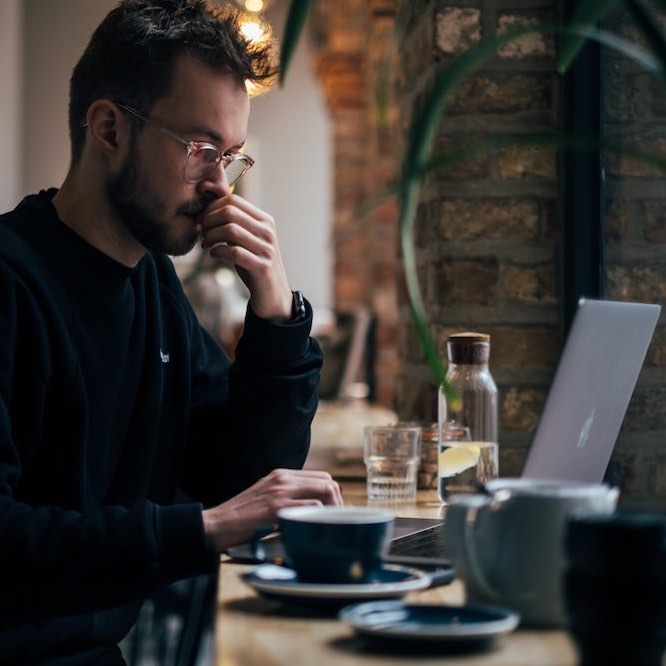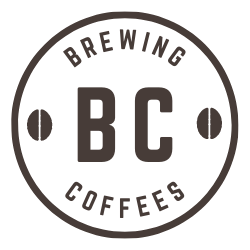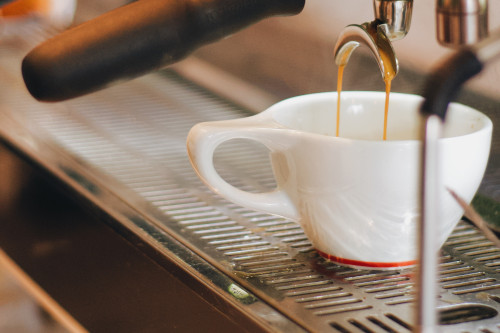Timing is a crucial part of making great coffee. An espresso that takes more than 30 seconds to pour is “over-extracted” and will taste bitter, while a shot that pours in less than 20 seconds is “under-extracted” and will taste too sweet.
This is why it’s important that you don’t just ignore the problem if your espresso machine is dripping slowly. It doesn’t just mean that you have to wait longer for your espresso, it will affect the taste of your coffee too.
This article reveals six common faults that cause espresso machines to drip slowly and how to fix them.
1. Clogged Filter
Clogged filters are a common problem in espresso machines. When the filter becomes clogged, it can cause water to flow too slowly, resulting in bitter-tasting coffee.
The most common culprits of clogged filters are old grounds left behind after brewing. If these grounds become wet again, they will stick together and form a blockage in the filter, restricting the water flow.
To avoid this issue, empty your used grounds immediately after each brew cycle is complete, regularly check your filter for any blockages or residue buildup, and clean the filter thoroughly whenever necessary.
Another potential cause of a clogged filter is hard water deposits such as calcium carbonate (CaCO3). These deposits can build up over time on the inside walls of your filter basket and eventually create an obstruction that prevents water from flowing freely.
To remove calcium carboinate deposits, you can either use a cleaning solution designed for removing mineral buildup from coffee equipment or simply soak your filter basket in white vinegar overnight before rinsing with hot water afterward.
2. Incorrect Grind Size
When the grind size of your coffee grounds is incorrect, it can affect the speed at which your espresso is extracted.
If the grind size is too coarse, then the water will pass through too quickly and not extract enough flavor from the ground coffee beans. The coffee will be under-extracted.
On the other hand, if the coffee grounds are too fine, then it will be difficult for any water to pass through, which will cause the espresso to drip slowly. The coffee will be over-extracted.
If your espresso machine is dripping slowly, consider how much you are grinding your coffee beans and whether you may have been grinding them too much.
If you have been using very finely ground coffee then you may find that switching to a coarser grind will allow your espresso to pour more quickly.
3. Dirty Group Head
The group head of an espresso machine is the part that holds the portafilter and dispenses hot water through the coffee grounds. It’s essential to keep this area clean to ensure a good cup of espresso. A dirty group head can lead to poor extraction, resulting in a slow drip of espresso and bitter-tasting coffee.
You should regularly clean your group head with a damp cloth. This will help remove any residue from previous shots and reduce the risk of clogging.
We also recommend descaling your group head regularly, as this will help to dissolve mineral deposits that can accumulate over time.
4. Overfilling The Basket
An overfilled basket is when the coffee grounds are packed too tightly into the portafilter. This can happen if you use too much ground coffee, or if you tamp it down with too much force.
The result of overfilling the basket is a blockage that prevents water from flowing through evenly and at a normal rate.
The best way to fix this problem is to reduce the amount of coffee grounds you are using and tamp them down less firmly. Also make sure there are no clumps in your coffee grounds, as these can cause blockages too.
5. Damaged O-Ring
The O-Ring is a gasket that helps to keep an airtight seal between the boiler and the group head. O-Rings are prone to wear over time, which can cause them to become brittle or cracked.
If this happens, they may not form an effective seal anymore, leading to leaks around your coffee machine’s joints or valves, which could cause it to drip too slowly or not at all.
To check if your O-Ring is damaged, you’ll need to remove it from its housing and inspect it for any signs of wear or tear. If there are any cracks or tears in the rubber material, then it’s likely that you’ll need to replace it with a new one.
If your O-Ring needs replacing, make sure to buy one specifically designed for your coffee machine, as they come in different sizes and shapes depending on what type of machine you have.
6. Low Pressure
If your espresso machine is dripping slowly and you’ve ruled out all of the possibilities above, you will need to look deeper into your machine to find the cause of the low water pressure. This means checking for problems such as blockages and damaged parts.
The first step in troubleshooting low pressure is to check the pump. Ensure that there are no blockages in the hoses leading from the pump and that all connections are secure.
If everything looks good with the pump, you can check other components of your machine, such as the valves on the boiler. If they appear worn or damaged, they may need replacing.
It’s also essential to ensure that all seals are correctly fitted so that air does not escape during extraction, which could cause a pressure drop.
Finally, if you have recently changed out any parts of your coffee machine, such as filters or baskets, make sure they fit as they should and aren’t too tight, which could restrict water flow.
To Conclude
If your espresso machine is dripping slowly, it’s important to address the issue promptly to ensure that you are not compromising the taste of your coffee. The six common faults outlined in this article can all cause slow drips, but thankfully, most can be easily resolved with proper maintenance, cleaning, and upkeep.
Coffee-making is a complex yet captivating craft that relies heavily on the perfect timing. With mindful attention to details such as grind size, filter, and group head cleanliness, you can guarantee your cup of coffee will be delightful each time.
As you hone in on this skillful artistry of espresso-making, consider also its repercussions beyond just your morning pick-me up; these include sustainability issues from sourcing habits to social and economic impacts associated with it’s mass production and consumption.
By supporting ethical and sustainable practices in the coffee industry, we can ensure that the joy of a great cup of coffee can be enjoyed by all for years to come.
FAQ – Why Is My Espresso Machine Dripping Slowly?
If your espresso machine is dripping slowly, it could be due to a clog or buildup in the machine, low water pressure, or incorrect grind size.
You can fix a clogged filter in your espresso machine by soaking it in a solution of hot water and detergent, using a paper clip to unclog any debris, or replacing the filter if it is beyond repair.
If your espresso machine is overfilling the basket and causing slow drips, try adjusting the grind size, tamping the coffee more firmly, or reducing the amount of coffee in the basket to prevent it from overflowing.

Hey there! I’m Austin and I love coffee. In fact, I drink about 5 americanos a day. I started BrewingCoffees because I wanted to share my love of coffee with the world. Before starting BrewingCoffees, I worked as a Barista for 7 years.


Leave a Reply